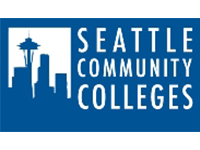Once youths go off track, it’s hard to get back on
 •
•
If you think the dystopian movies filling our screens lately are scary, just take a look at the latest numbers on disconnected youths – teens and young adults who aren’t working or in school.
More than 5.5 million Americans between 16 and 24 fall into that discouraging category, according to the study. While that’s 280,000 fewer than the postrecession peak in 2010, it’s still nearly 1 of every 7 of that age group – and more than the entire populations of 30 states.
The study’s authors warn that these young people “are cut off from the people, institutions and experiences that would otherwise help them develop the knowledge, skills, maturity and sense of purpose required to live rewarding lives as adults.”
Whether the cause or the result or both, disconnected youths are nearly twice as likely to be poor and half as likely to have a college degree. Disconnected girls are more than three times more likely to have a child. This is a much broader group than millennials unfairly labeled as slackers.
Using census data, the researchers ranked the 98 biggest metro areas in the country, including 10 in California. As you might expect, the ones along the coast had the lowest percentages of disconnected youths. Areas in the Central Valley and Inland Empire had the highest percentages. In fact, at 21.2 percent, Bakersfield was next to last in the nation, ahead of only Memphis.
With a disconnection rate of nearly 15 percent, the Sacramento metro area came in at No. 66, one spot worse than down-on-its-luck Detroit. Nearly 43,000 youths in our region don’t have jobs and aren’t in school; the rate for blacks is a shameful 27 percent and for Latinos is only somewhat better, 18 percent.
Nationwide, the disconnection rates for African Americans (21.6 percent) and Latinos (16.3 percent) are much higher than for whites (11.3 percent) or Asian Americans (7.9 percent). Black boys and young men have the highest rates because they are the most likely to be unemployed. Among Latinos, however, girls and young women are more likely to be disconnected.
“Place matters. Race matters. But our analysis shows that the combination of the two really packs a wallop,” write the authors at Measure of America, a project of the Social Science Research Council.
They also say that individual effort isn’t enough for these young people to overcome their challenges because they come from entire communities that are disadvantaged. “We’re spending our time, money and effort fighting the symptoms of youth disconnection instead of addressing its root causes,” they say.
That phrase is politically controversial, but in this case it’s probably true. Politicians and policymakers talk all the time about how our children are our future. This study reinforces the need to back up their words with action and money.
President Barack Obama launched My Brother’s Keeper, a program to keep young people on track. Based on these numbers, that’s a good issue for him to focus on after he leaves the White House.
By the numbers
Where California metro areas rank nationally in the percentage of youths 16-24 who aren’t working or in school:
- 9. Oxnard-Thousand Oaks-Ventura, 9.8 percent
- 16. San Jose-Sunnyvale-Santa Clara, 10.4 percent
- 30. San Francisco-Oakland-Hayward, 12.1 percent
- 40. Los Angeles-Long Beach-Anaheim, 12.7 percent
- 60. San Diego-Carlsbad, 14.4 percent
- 66. Sacramento-Roseville-Arden Arcade, 14.8 percent
- 75. Stockton-Lodi, 15.4 percent
- 88. Riverside-San Bernardino-Ontario, 17.6 percent
- 89. Fresno, 17.7 percent
- 97. Bakersfield, 21.2 percent
Source: “Zeroing in on Place and Race,” Measure of America









